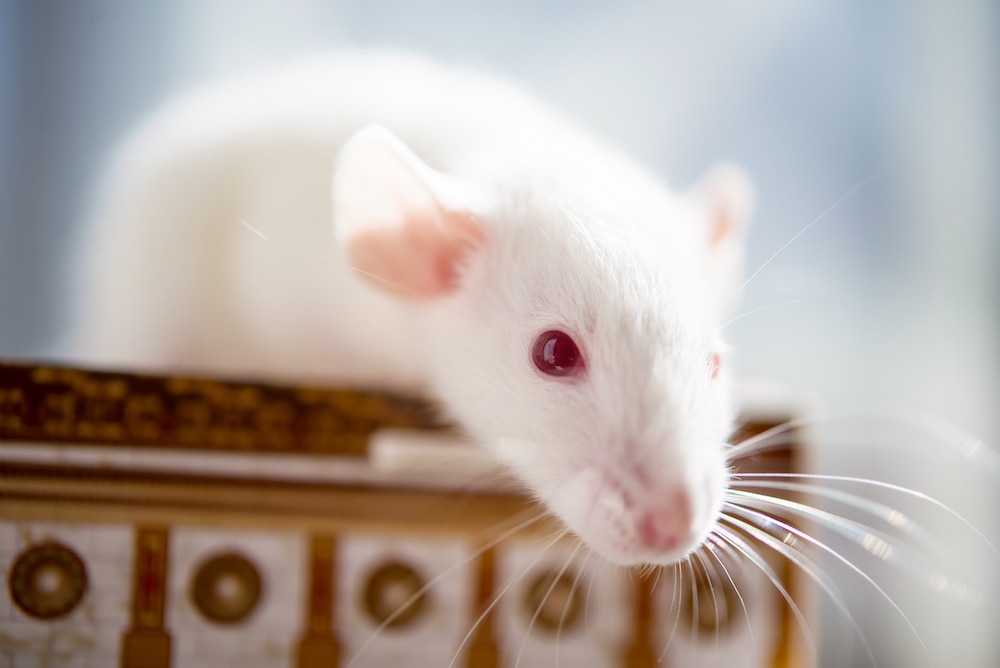Create a free profile to get unlimited access to exclusive videos, sweepstakes, and more!
Scientists stop and reverse aging in mice
We don't know if we've ever seen an old mouse, but now we'll never have to.

Most of us want to live a long time, but we don’t want to get old. Unfortunately, those two conditions appear to be mutually exclusive. Living a long time requires that we age. That wouldn’t be so bad if our bodies didn’t forget how to be good at being a body as we got older.
As we age, our bodies get worse at making clean copies of our cells and tissues. Our bones become more prone to breaking; our muscles get weaker; our skin gets thinner and starts to wrinkle; and our blood vessels get worse at holding pressure. Entropy takes hold and we get old.
Humans have been searching for a way to halt or reverse aging for centuries. We’ve looked for enchanted stones, for magic spells, for elixirs and fountains, and every time we’ve come up short. We’ve never been a species interested in giving up, so now we’re looking to the latest form of magic: science!
A new study carried out by scientists at the Salk Institute for Biological Studies, Genentech, Inc., and other collaborators, shows that we can effectively reverse the aging process in middle-aged and elderly individuals by toying with epigenetic factors, resetting cells to a younger state. Their results were published in the journal Nature Aging. There’s only one catch, the individuals in question were all mice.
Over time, our cells undergo changes in epigenetic markers and those changes result in what we experience as aging. Scientists have previously identified four molecules — Oct4, Sox2, Klf4, and cMyc — which are commonly called Yamanaka factors, in biology circles.
Those four molecules are a group of protein transcription factors which play a part in the creation of stem cells. In 2006, Professor Shinya Yamanaka, for whom the molecules take their collective name, used them to create stem cells from adult fibroblasts.
A previous study used those Yamanaka factors to reduce aging and extend lifespan in a group of mice who had a premature aging disease. They were also shown to improve the function of various tissue types in the body. This time around, scientists wanted to know if the therapy could be used safely and effectively in healthy mice, by resetting epigenetic markers in cells.
The mice were broken up into three groups. The first was near the very end of their natural life span and received treatment for only one month. The second was treated over a seven-month period in what we would consider old age. The last group was treated for 10 months, during the mouse equivalent of middle age.
In all three groups, scientists found no negative impact of the treatment. Specifically, there was no increase in the incidence of cancer. In the group which was only treated for a month toward the end of their natural lives, they found no significant improvement or change in the course of ordinary aging. By contrast, the two other groups did exhibit measurable improvements and reversals of the aging process.
The skin, organs, and epigenetic markers of the test animals looked the way they would in younger individuals. They also showed a more robust ability to heal. After injury, the treated animals healed more quickly and with less scarring.
Moreover, the effects became more apparent the longer an individual was treated, suggesting that starting early and maintaining treatment has the highest impact on arresting or reversing the effects of aging. The effects of the treatment appear to stack up over time.
More testing is needed before a similar treatment would be ready even for clinical trials in humans. Hopefully scientists move forward quickly. We’re not getting any younger. Or are we?


























